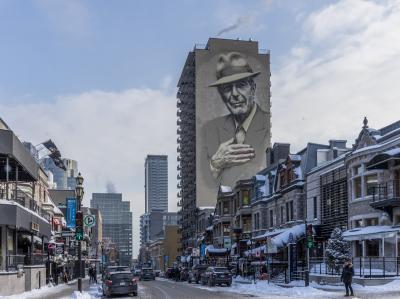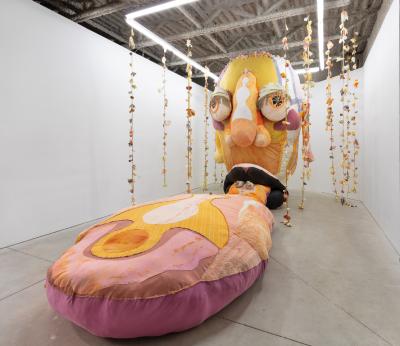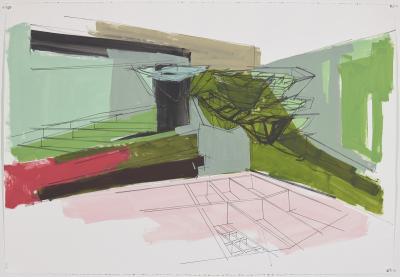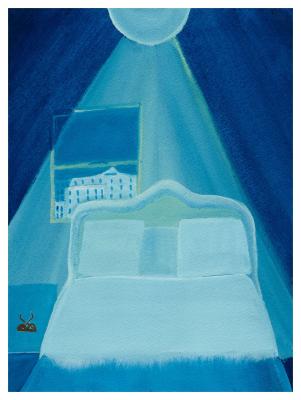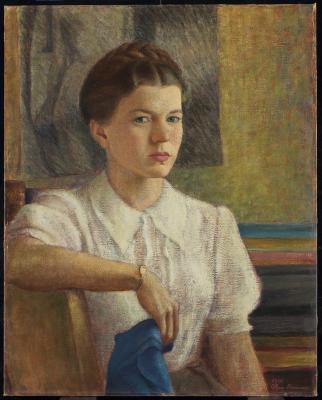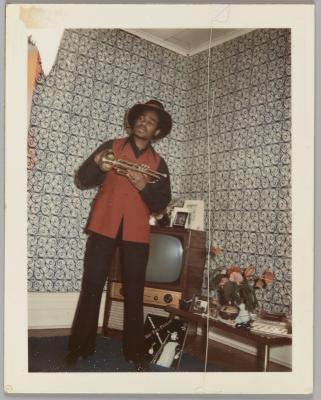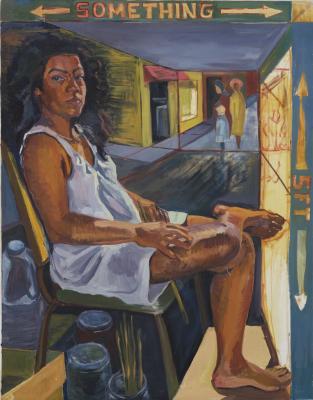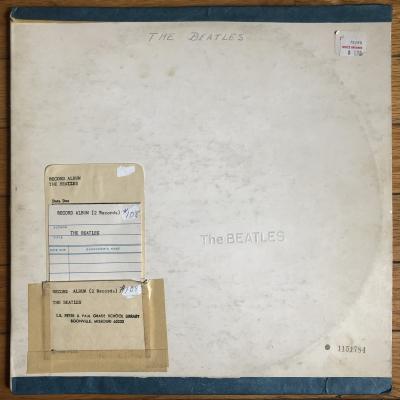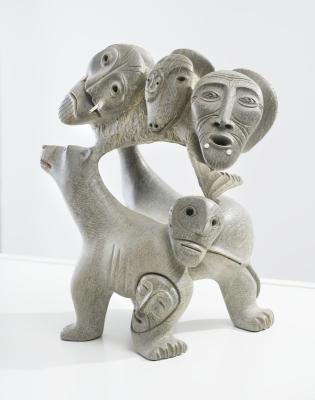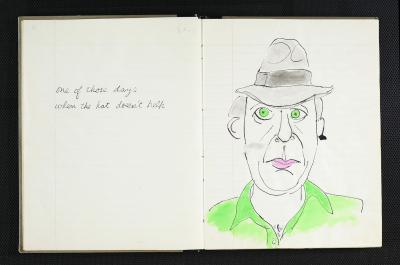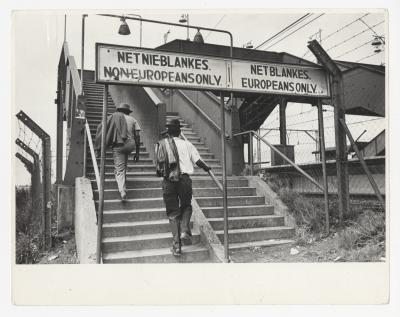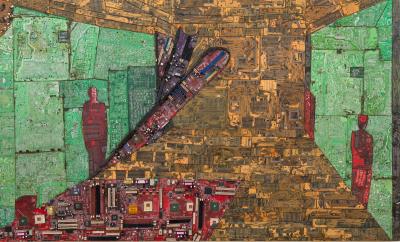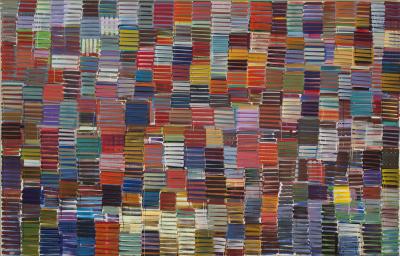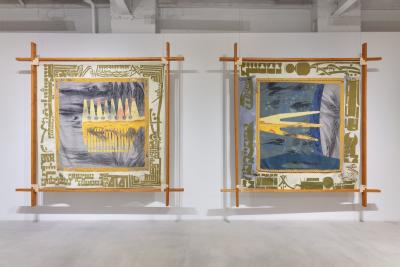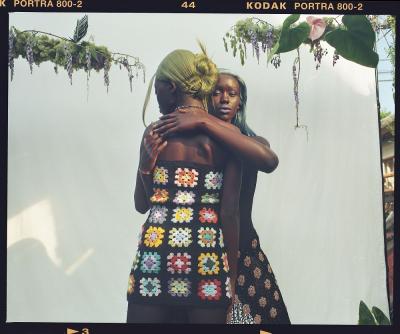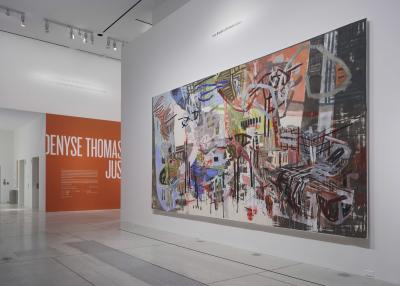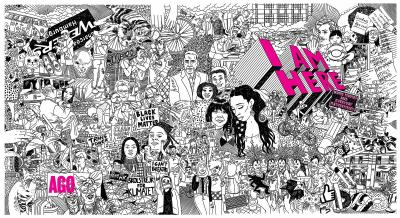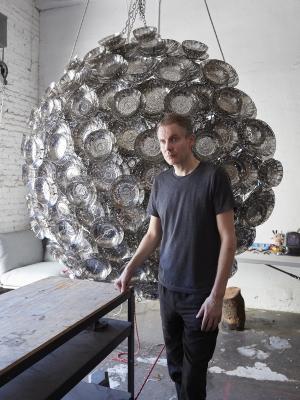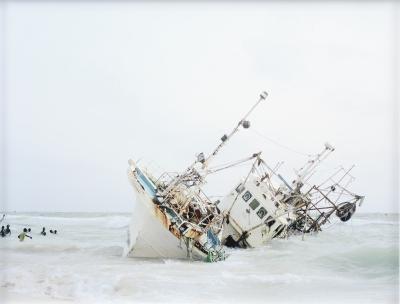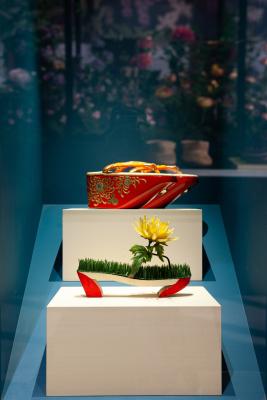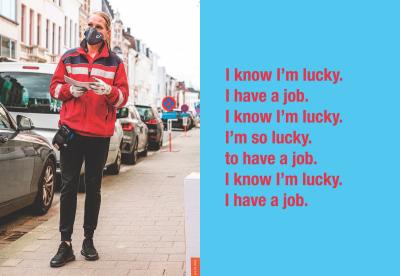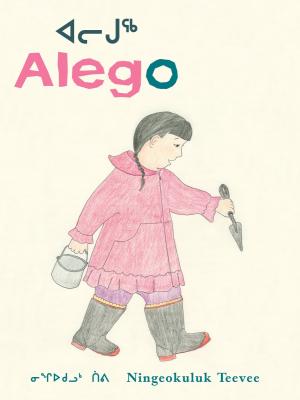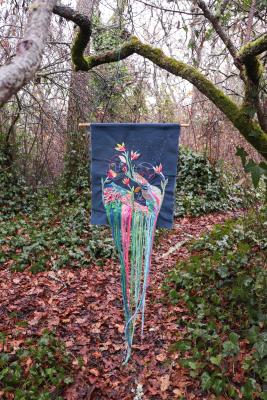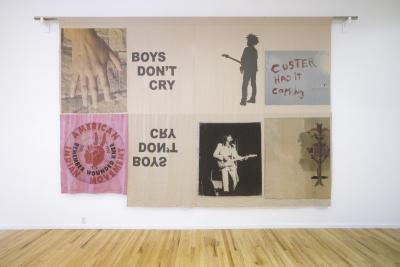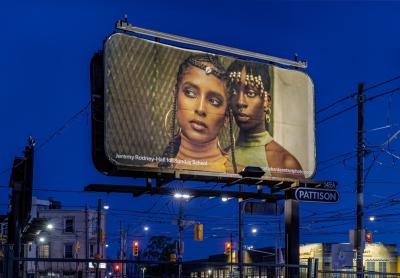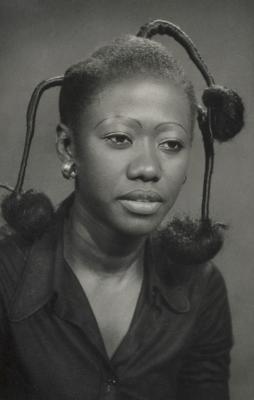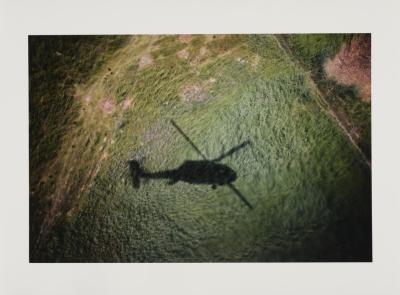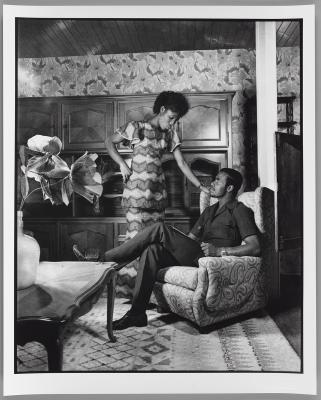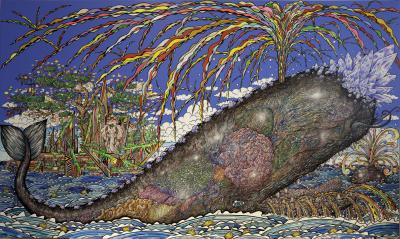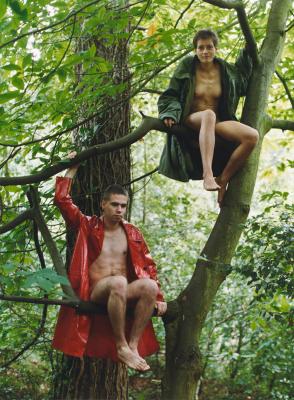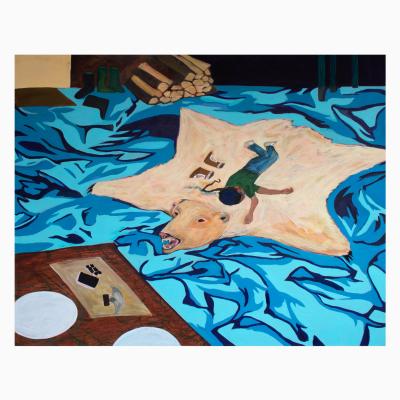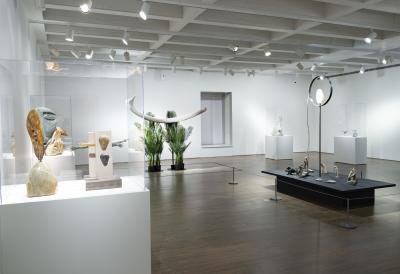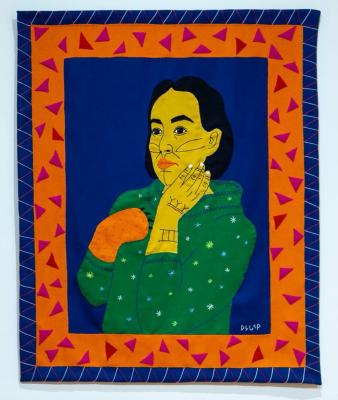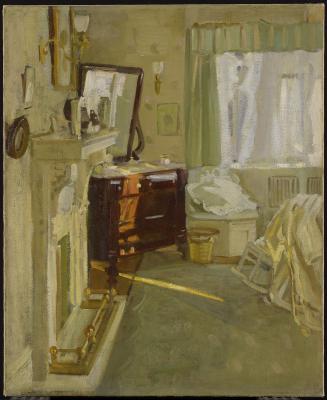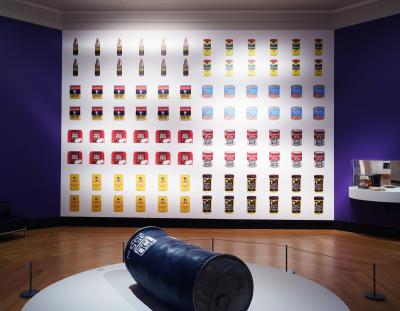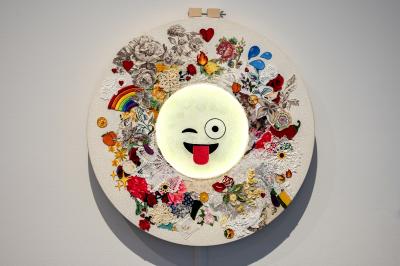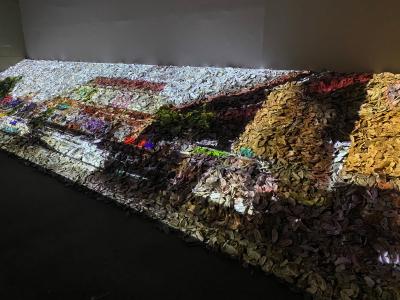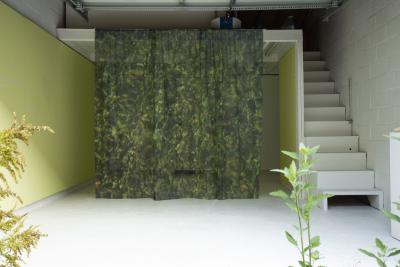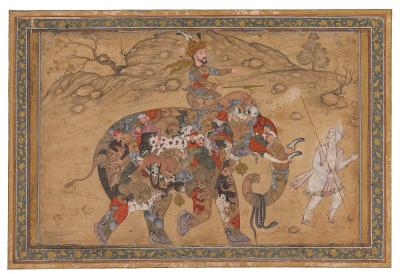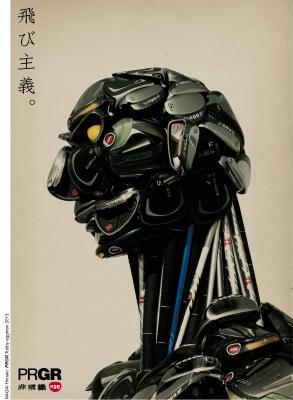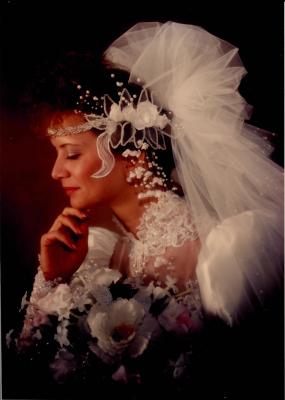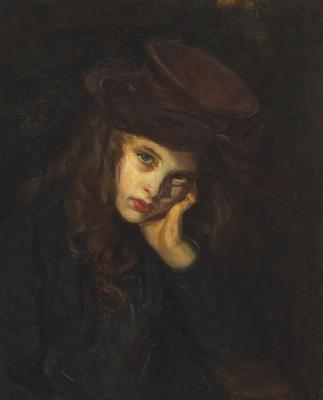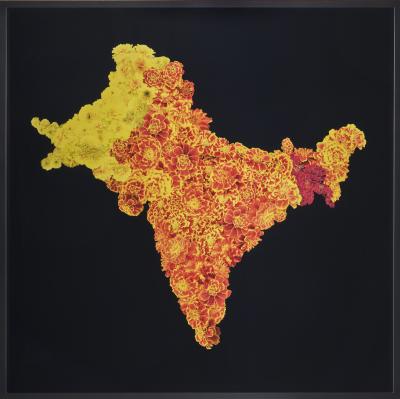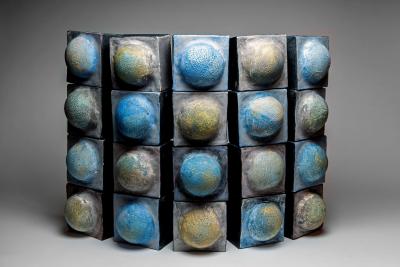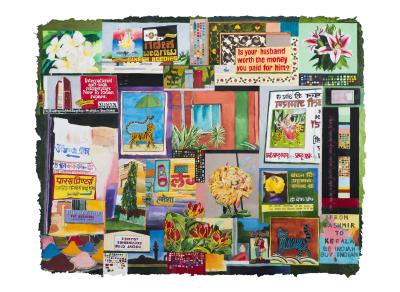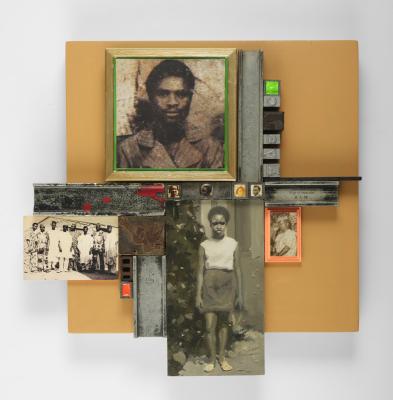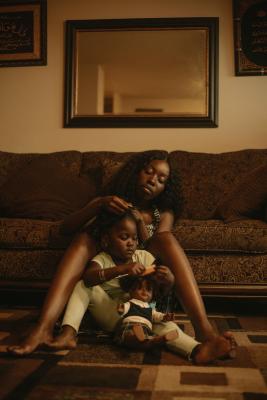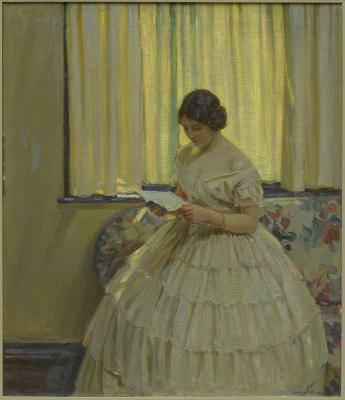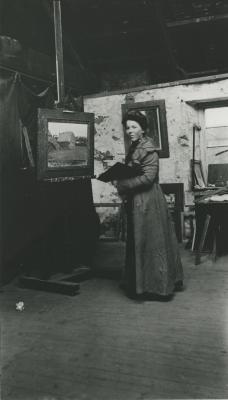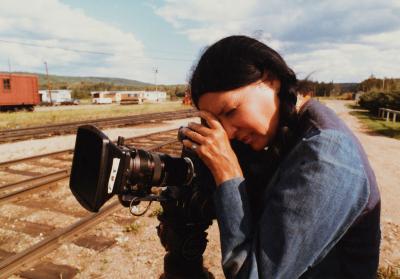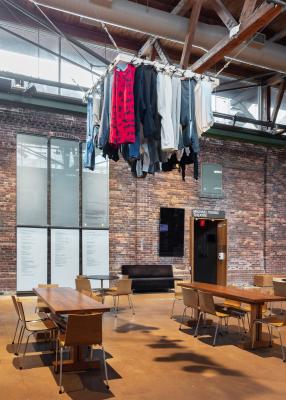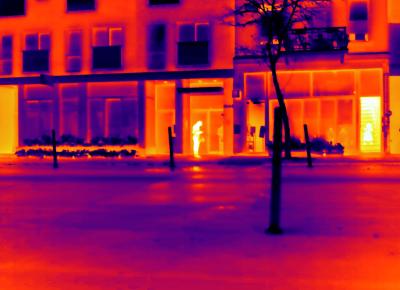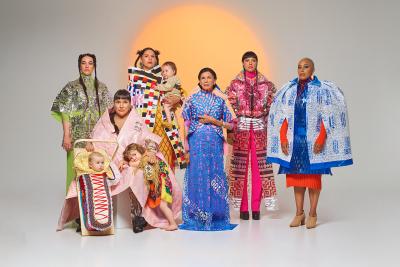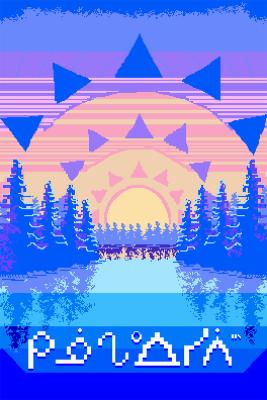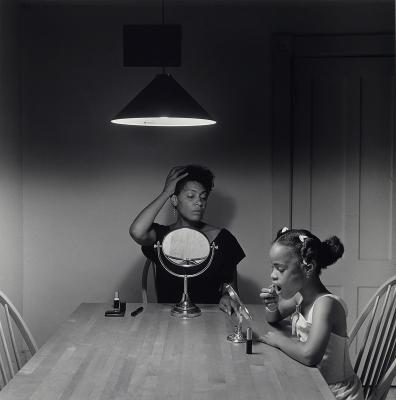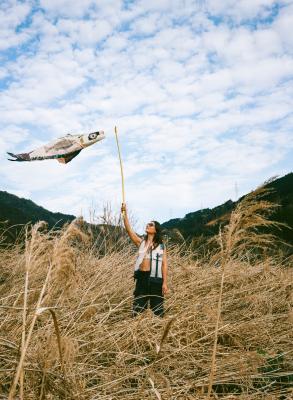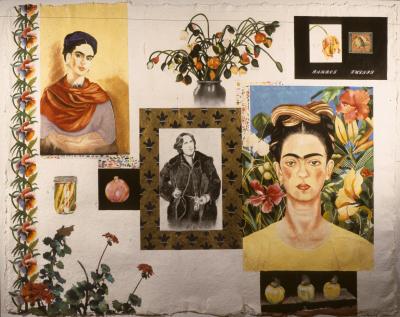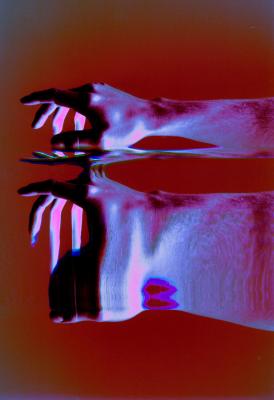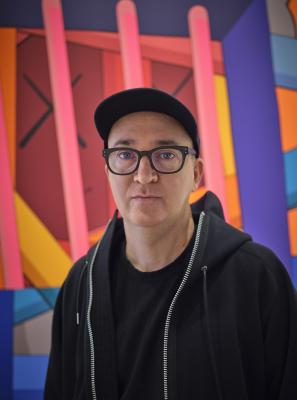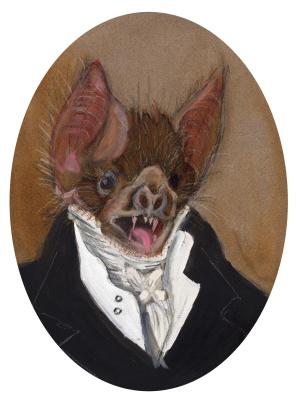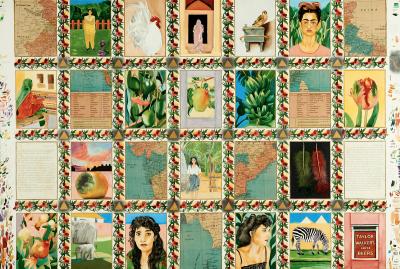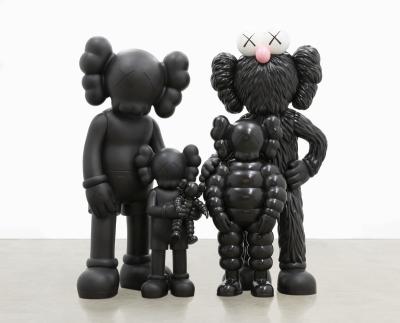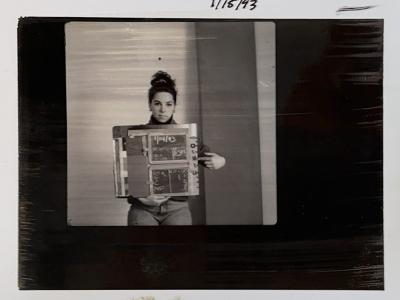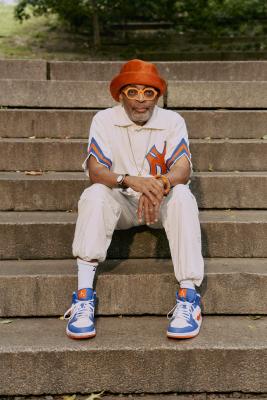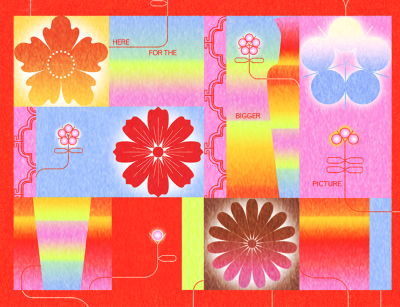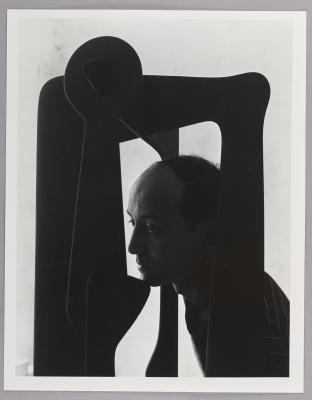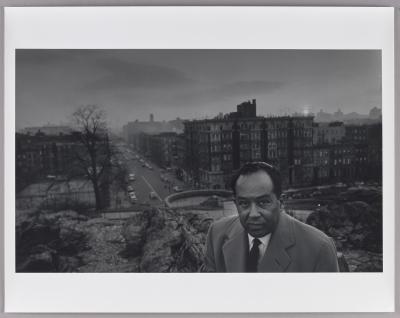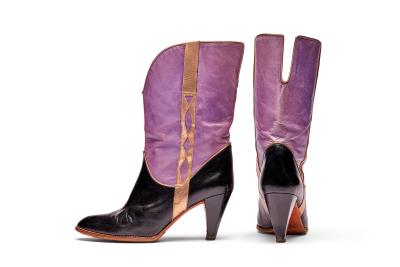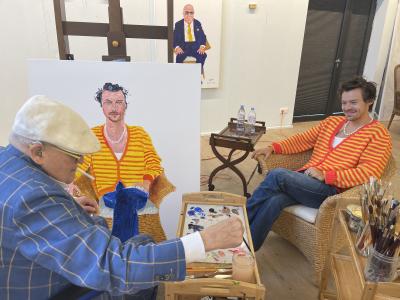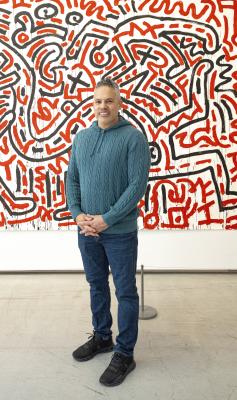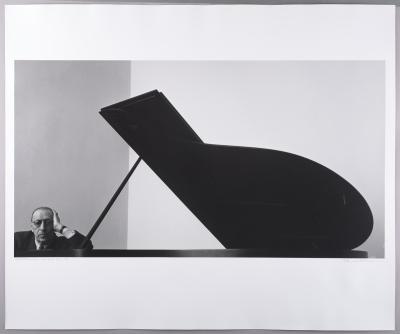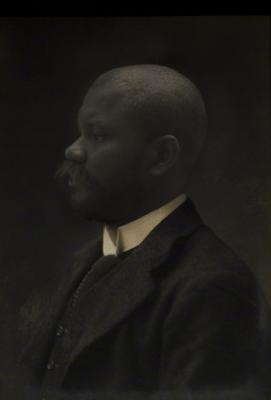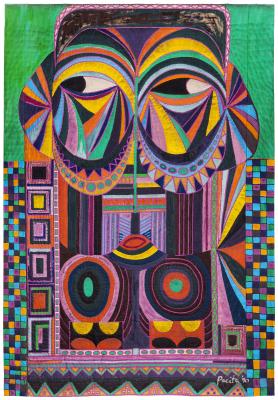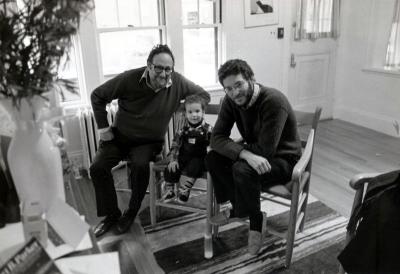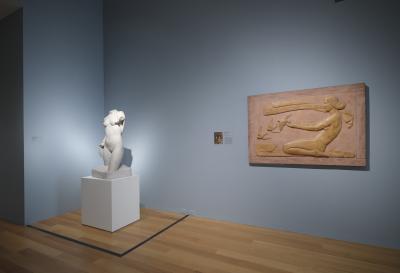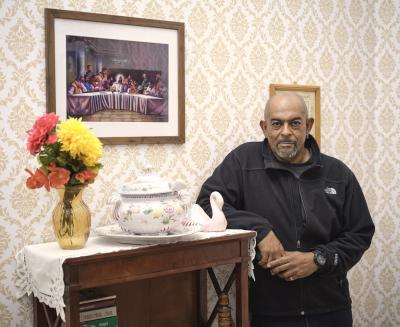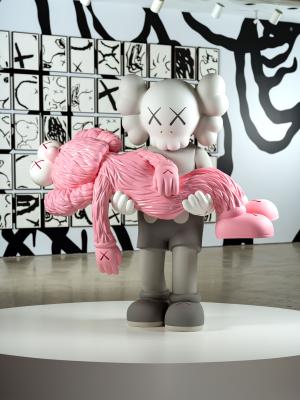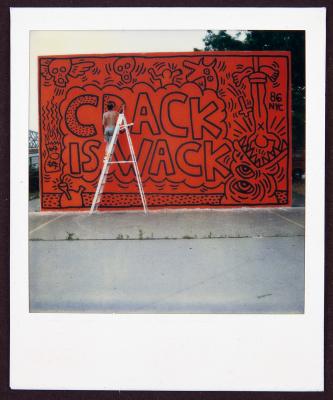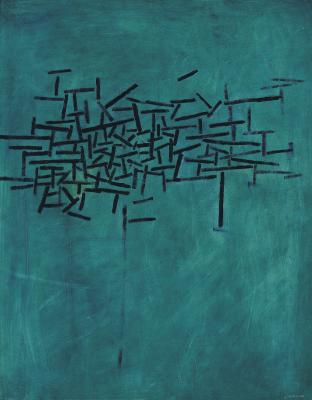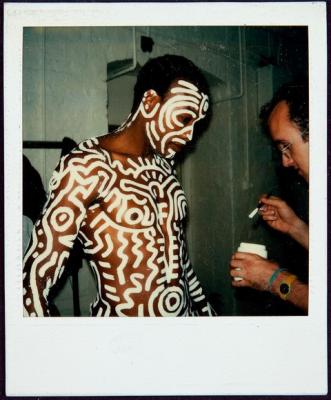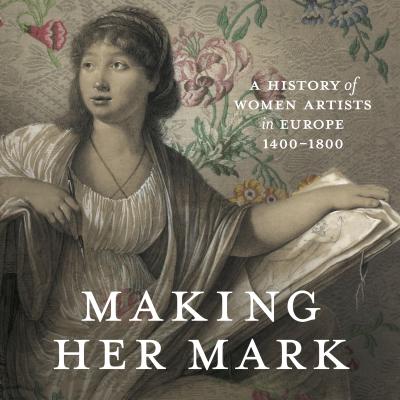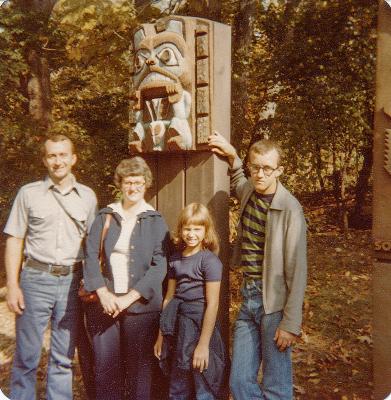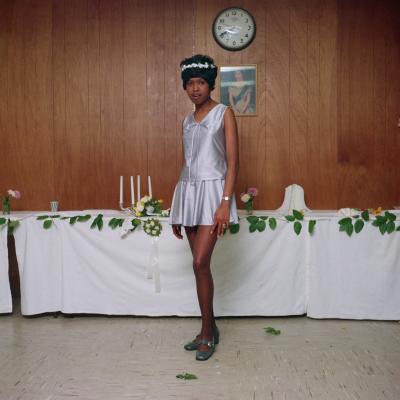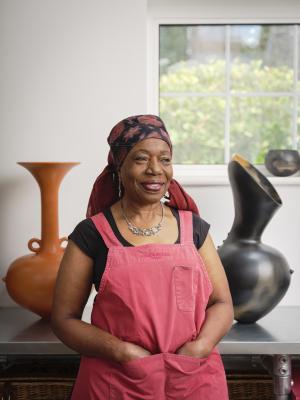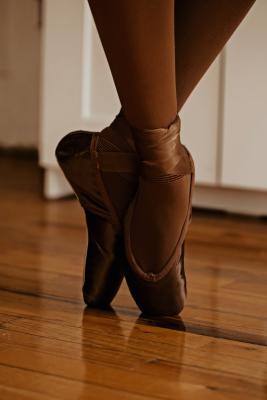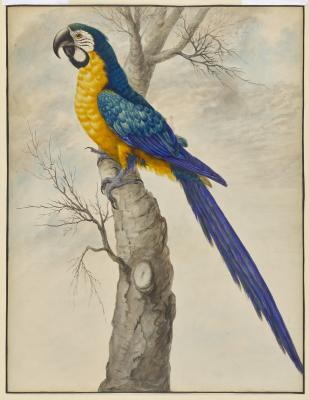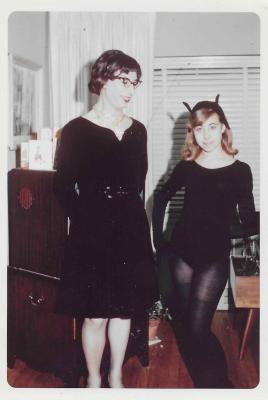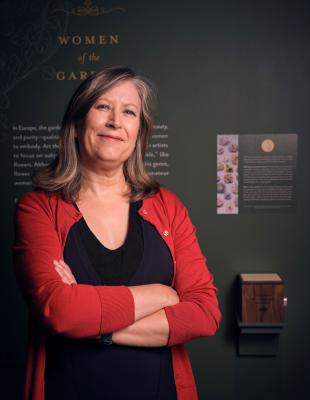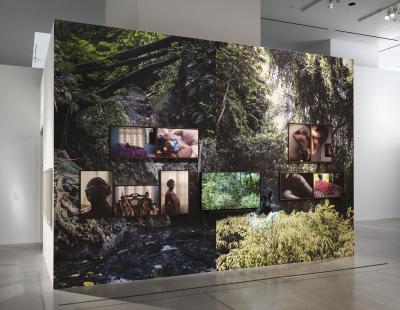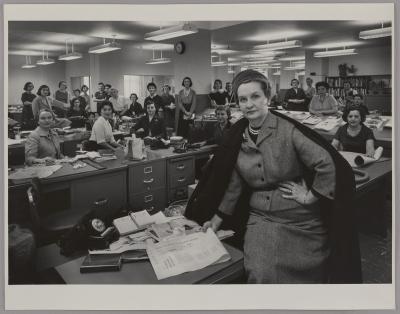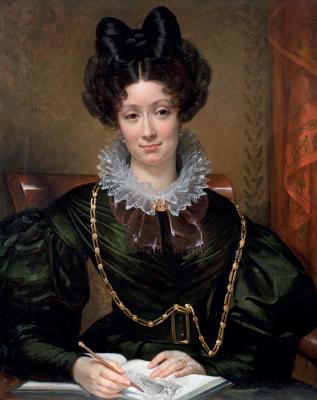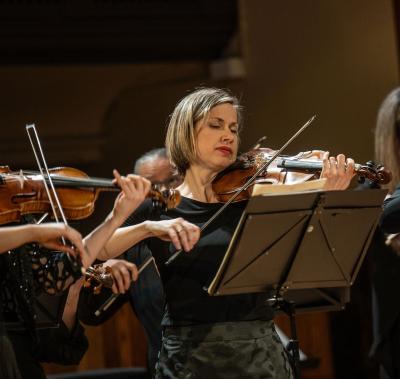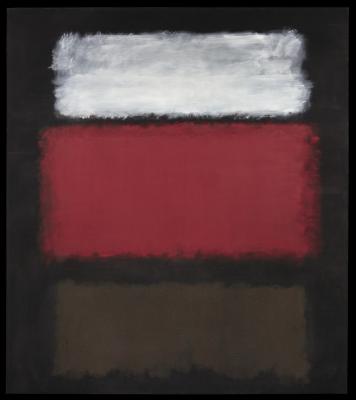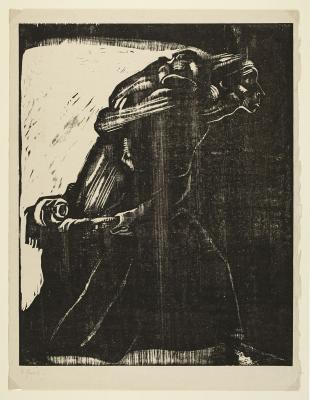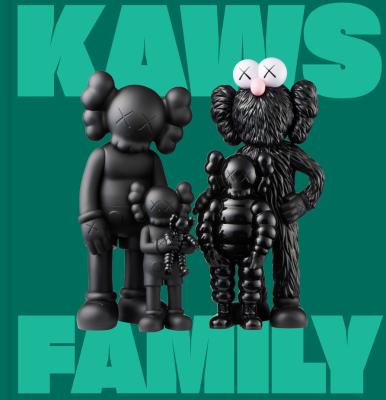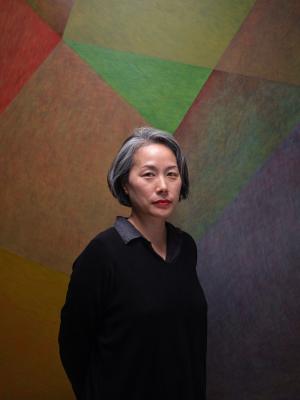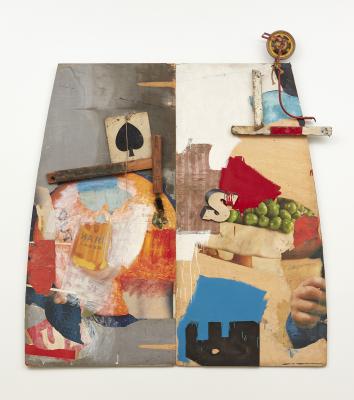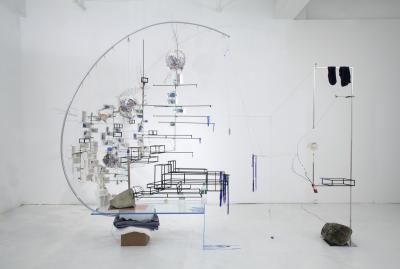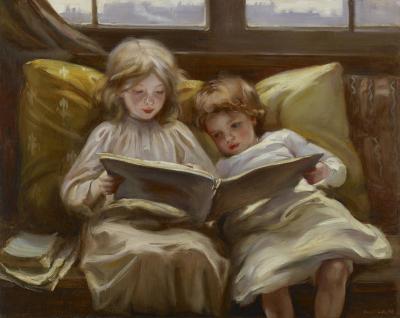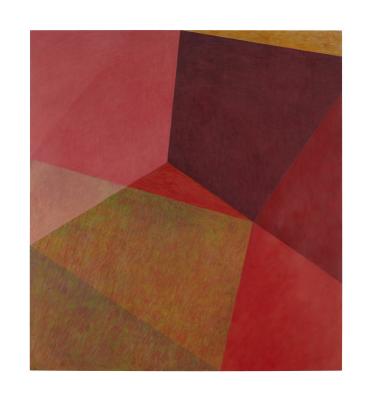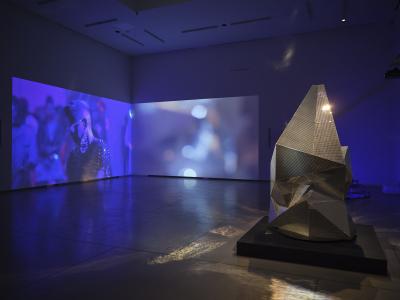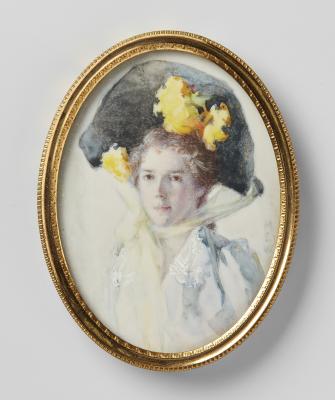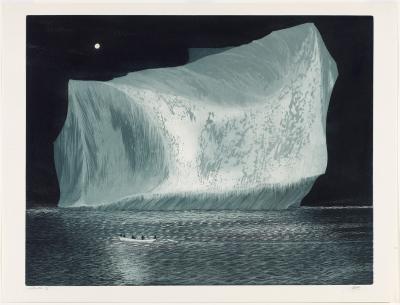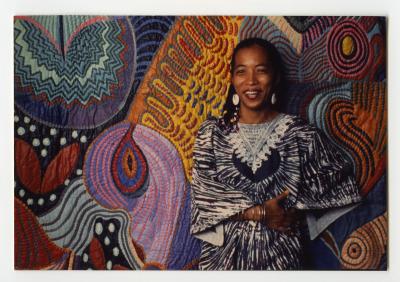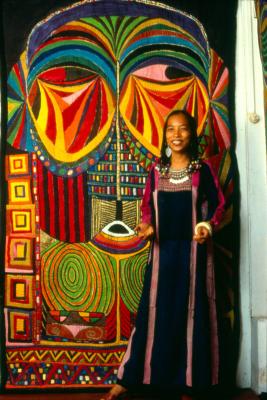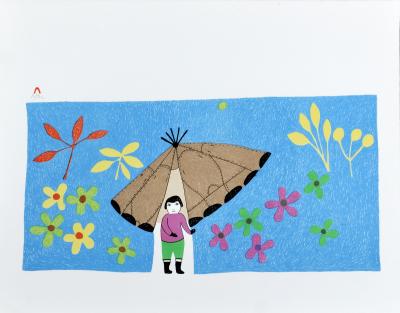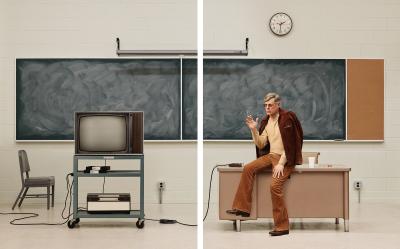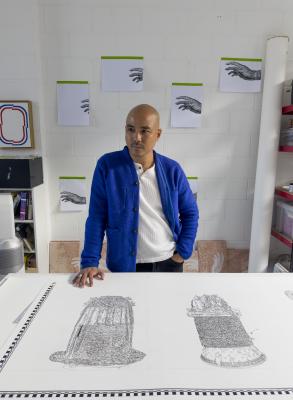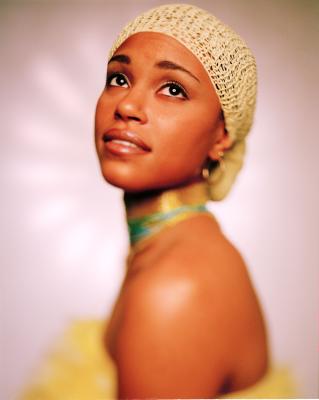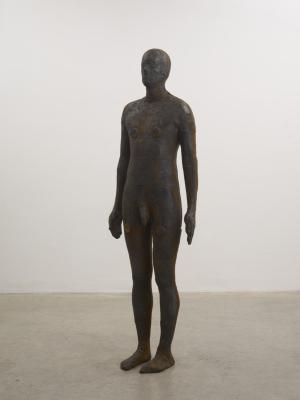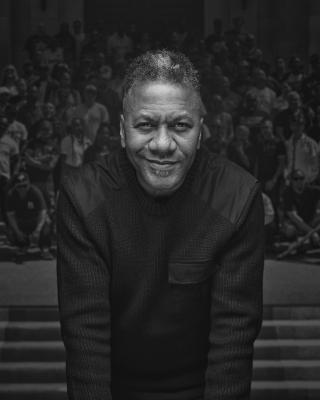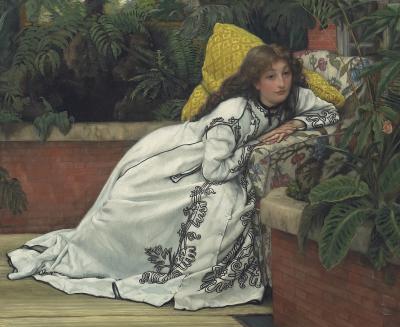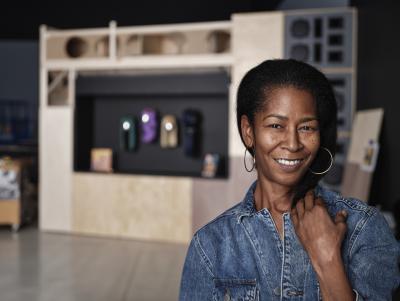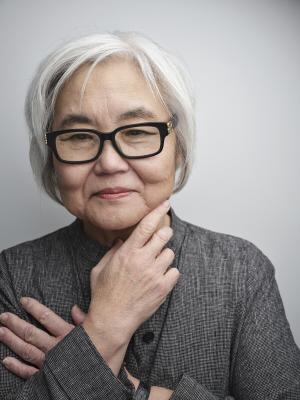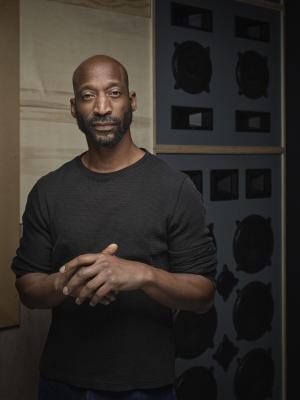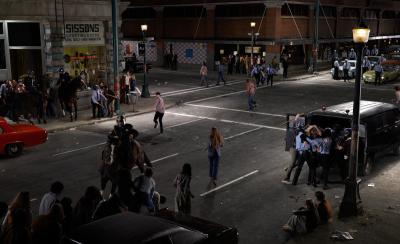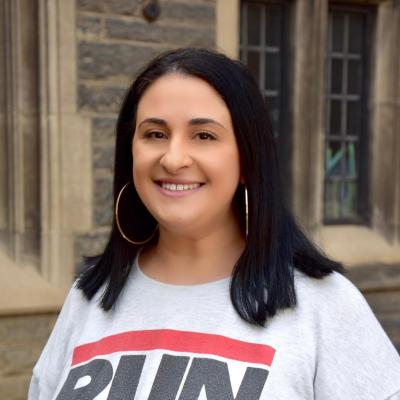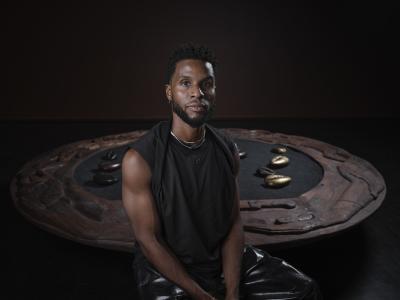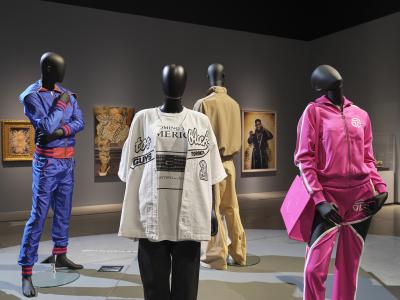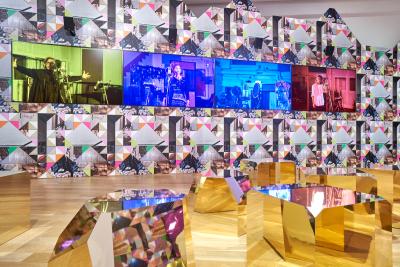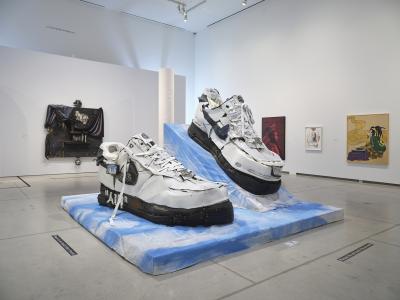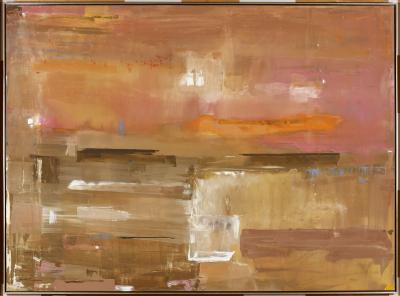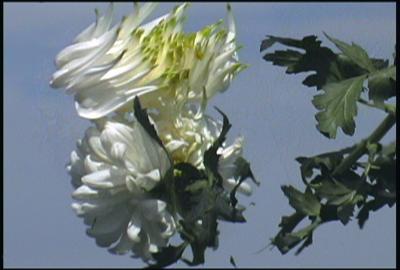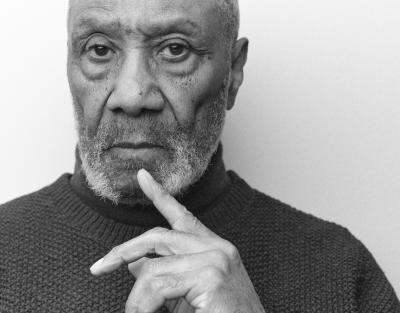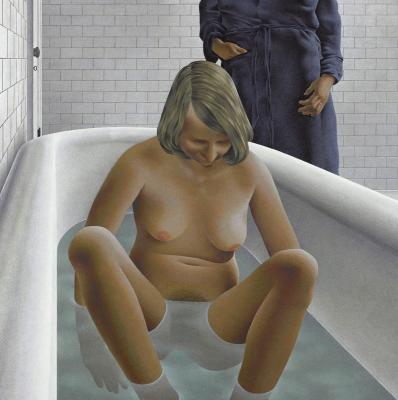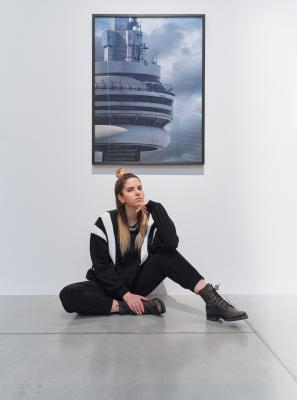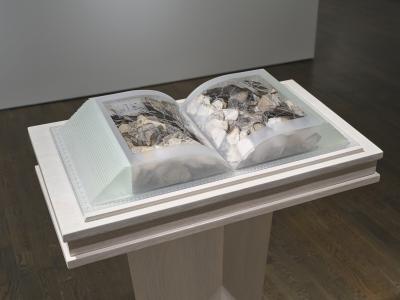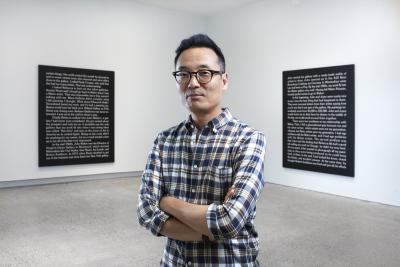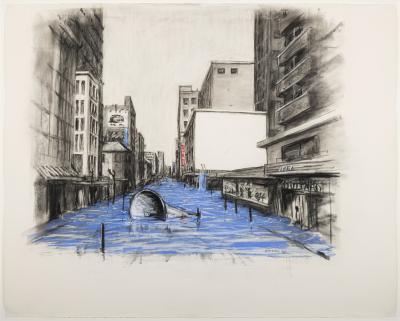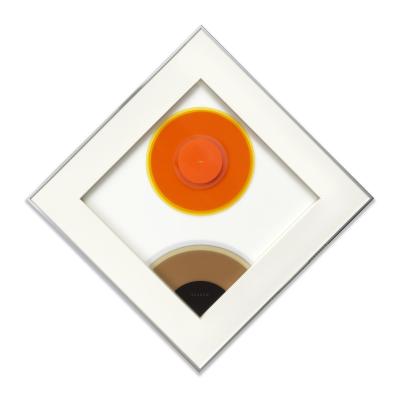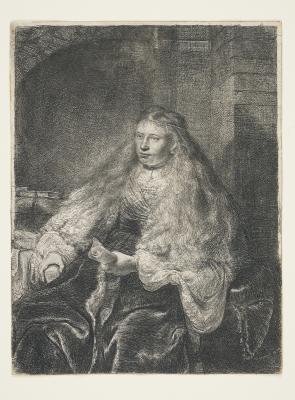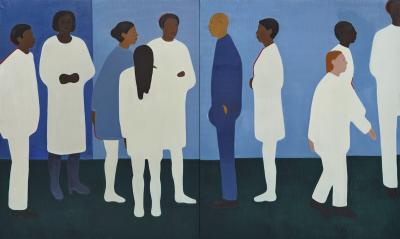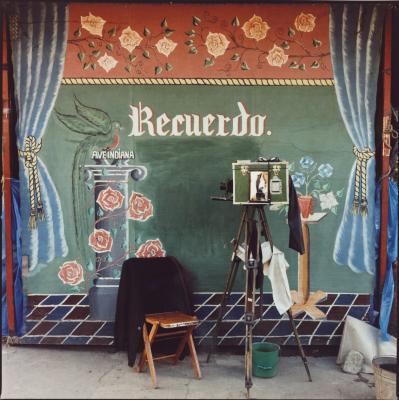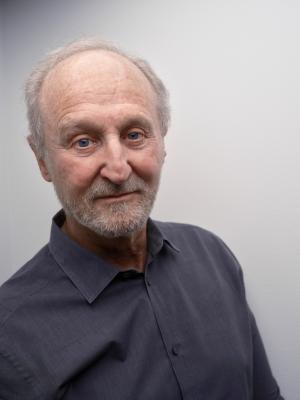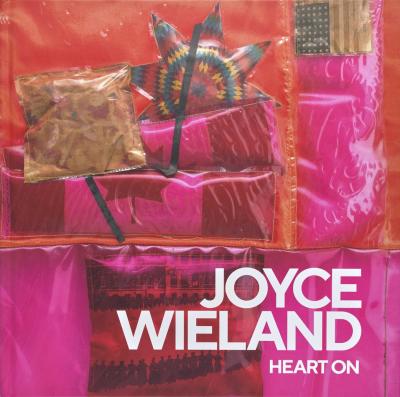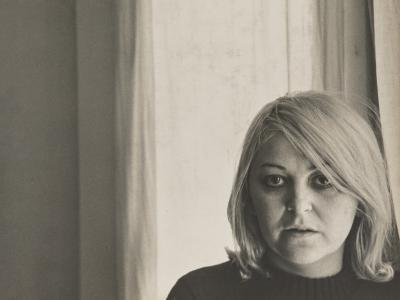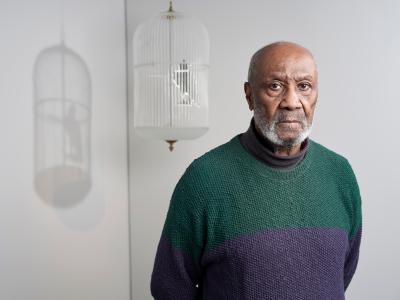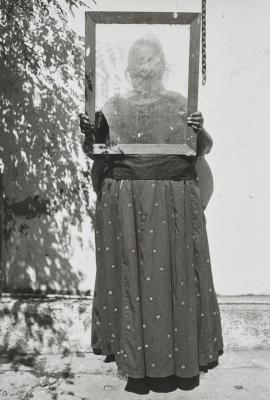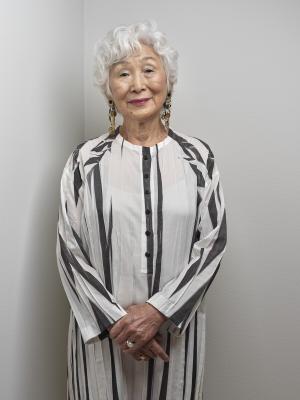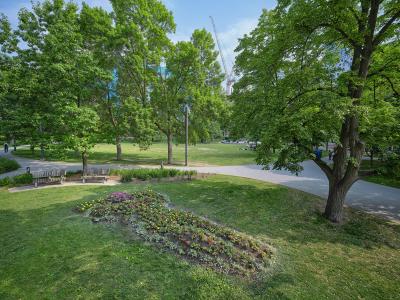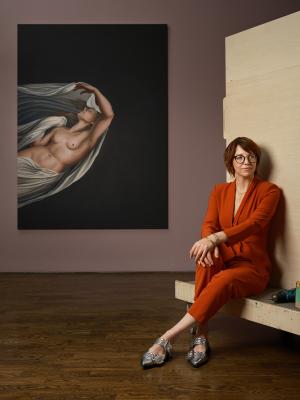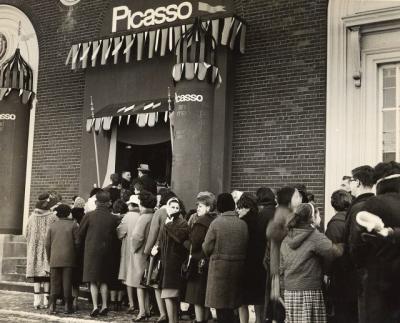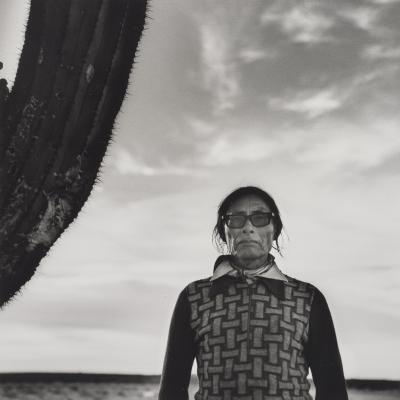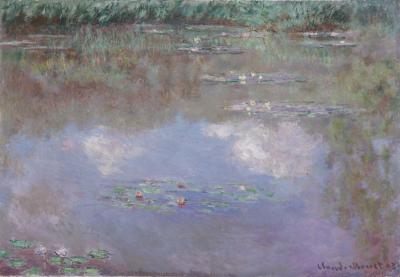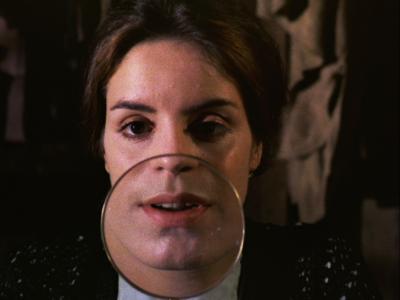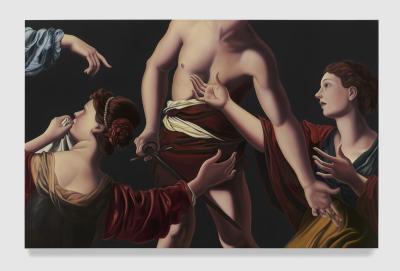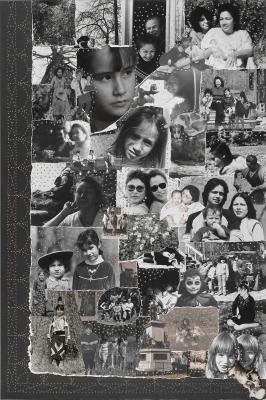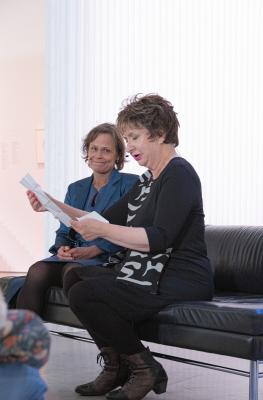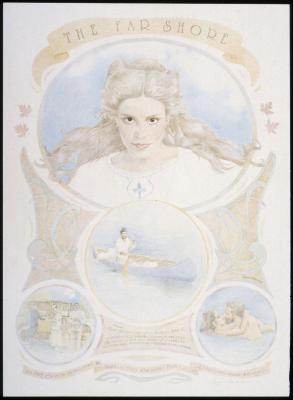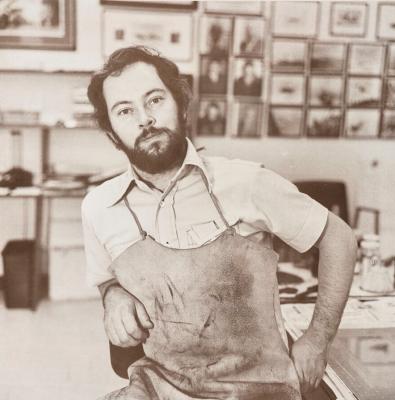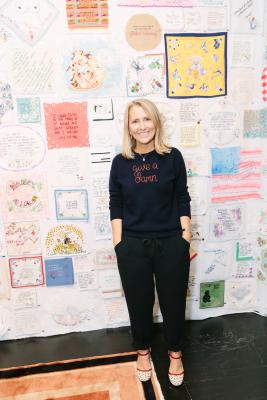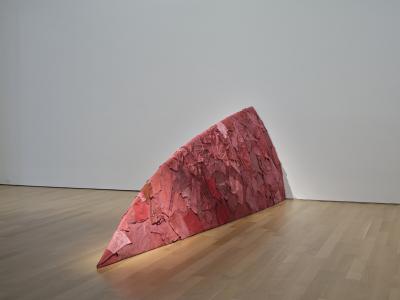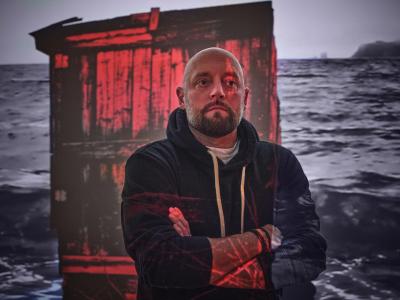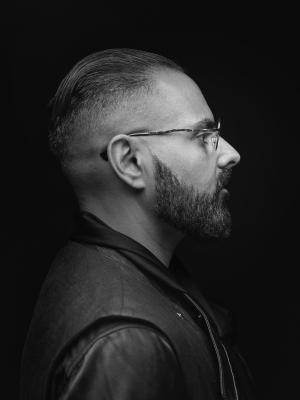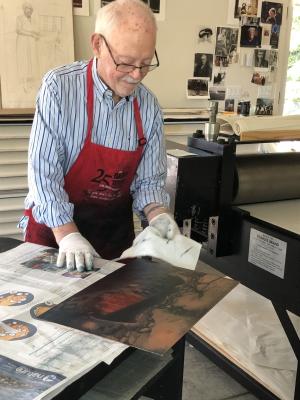In Conversation With KAWS
The Brooklyn-based artist discusses his AGO exhibition, KAWS: FAMILY
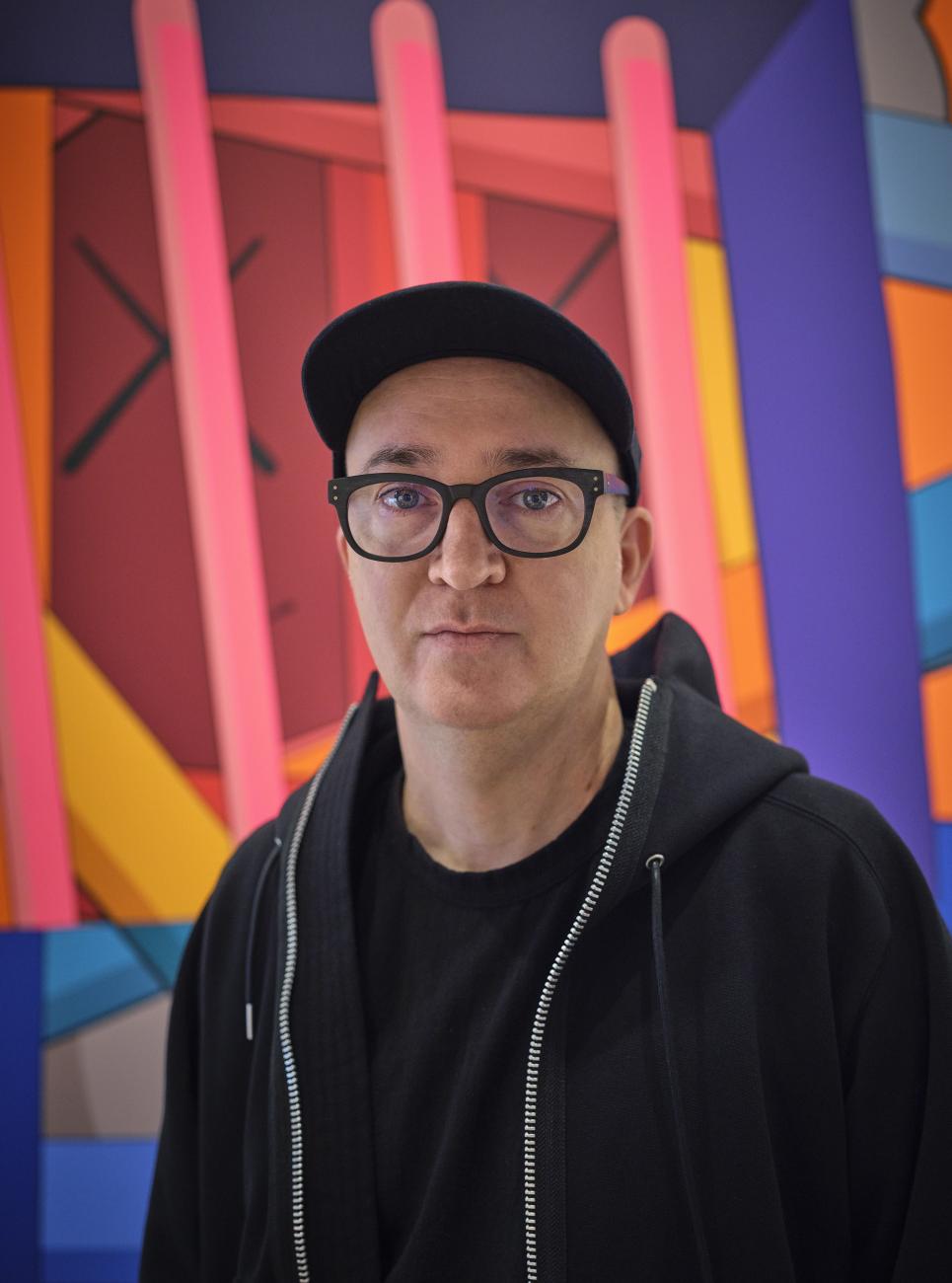
KAWS, 2023. Photo: Craig Boyko © AGO
KAWS cut his teeth as a graffiti artist in the 1990s, “bombing” through the streets of Jersey City, then in New York City with graffiti legends like Zephyr. He then graduated to guerilla-style public art interventions, painting his famed iconography and characters directly over top of corporate billboards and phone booth ads. After being introduced to vinyl toy mogul Hikaru Iwanaga on a serendipitous trip to Japan, KAWS made his foray into sculpture, issuing a small run of “COMPANION” toys in 1999 – the rest is history.
Over the last two decades, KAWS has become a household name in the worlds of fine art and design. His iconic family of characters have appeared everywhere from the Macy’s Thanksgiving Day parade to Kid Cudi album covers, and his vibrantly coloured, hard-edged paintings are the pride of major art collections across the globe. For the first time in Canada, the AGO presents a landmark exhibition of the Brooklyn-based multi-disciplinary artist, KAWS: FAMILY.
Curated by Julian Cox, AGO Deputy Director and Chief Curator, visitors will witness KAWS' meticulous methods, creative process and range, through more than 75 artworks including ink drawings, paintings, sculptures, his altered phone booth advertisements and product collaborations. Centered in Signy Eaton Gallery, with installations throughout the museum, the centrepiece of the exhibition is a larger-than-life bronze sculpture titled FAMILY (2021), featuring a group of KAWS’s recurring figures of varying sizes posed as a nuclear family.
In the days leading up to the exhibition’s public opening, we met with KAWS for a conversation. Seated comfortably amongst his newly installed works, he reflected on 30-plus years of art making – from teenaged graffiti writer to pop culture icon.
This interview has been edited for length and clarity.
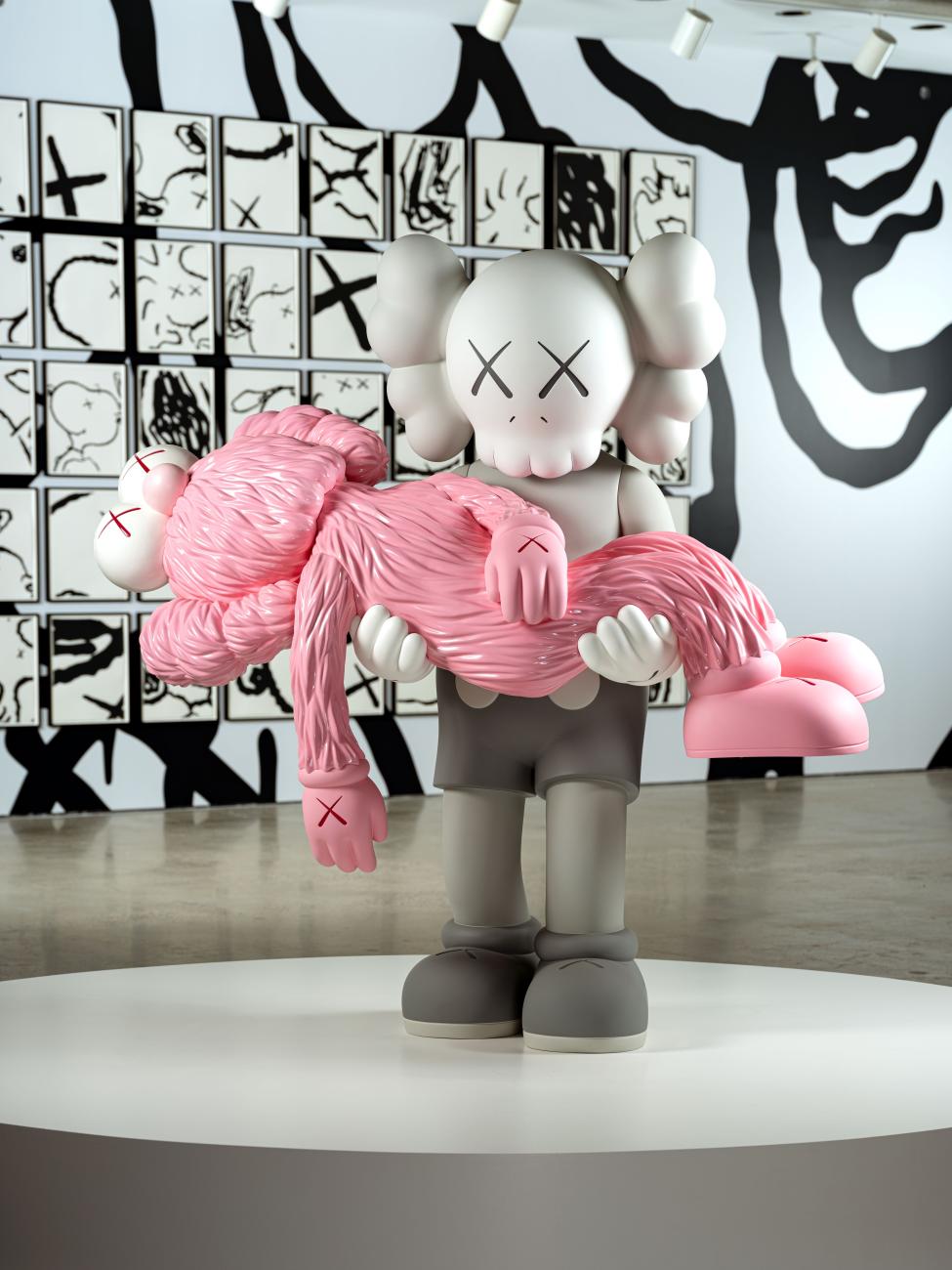
Installation view, KAWS: FAMILY, Art Gallery of Ontario. Work shown: GONE ,2020. © KAWS. Photo: Jonty Wilde.
Foyer: The show features such a vast spectrum of materials - painted bronze, wood, sneakers, acrylic paint, augmented reality and more. When you begin to conceive of a project, what is your procedure for narrowing down materials, medium and the direction of work?
KAWS: In preparation for this exhibition in particular, I worked closely with Julian Cox. It's my first show in Canada, so I felt it was important to bring in many different aspects. Even the title – FAMILY – came after being in conversation about the show and talking about the different outlets I use and how they're all connected.
When I make things, I always approach them in the same way. There's no hierarchy in my head – it’s not as though painting is some elevated thing and sneakers or album designs are somehow lesser. I approach everything with the same sort of appreciation and effort. I thought it was important to put that kind of stuff in the show. For example, there’s a vinyl figure on a plinth in the main gallery right there along with the large bronze sculptures––and they feel aesthetically similar. There are thousands of those vinyl figures out in the world and the idea that a young person who’s had one on their bookshelf for the last five years can come in and see it in the museum is important to me.
I am interested in bronze because there's a long lineage of bronze in art history (and the permanence of it). Even though they are made of this significant material, I try to make the surface of my sculptures look like the plastic toys I make because I want to push back against this perception that because something is plastic, somehow it’s not art; like it's a product or something. And if something is bronze, suddenly it’s “elevated”. I want to wash those distinctions away.
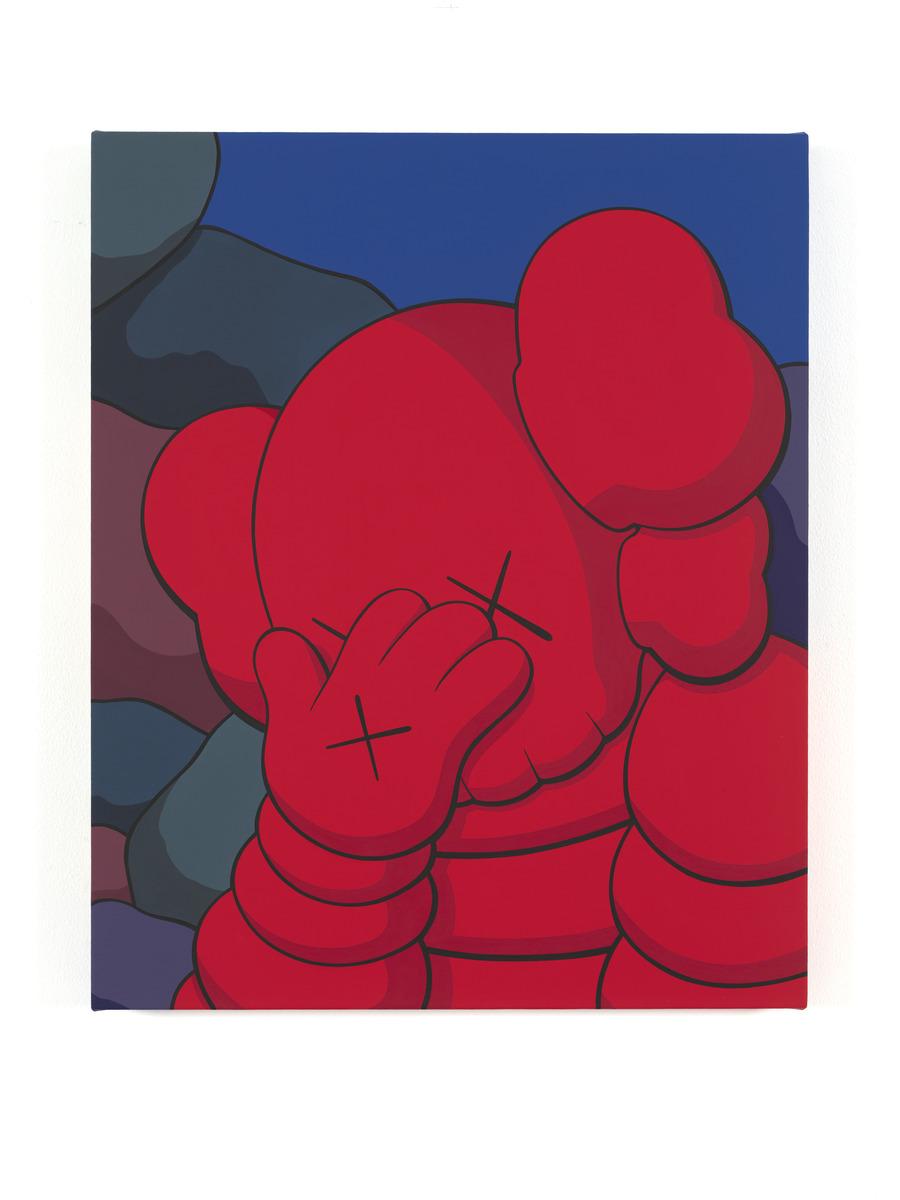
KAWS. THE PORTRAIT, 2021. Acrylic on canvas, 55.9 × 45.7 © KAWS. Photo: Farzad Owrang
So much of your work references the realm of classic cartoons, whether it be specific, iconic characters, or the aesthetic tropes that are often found in the cartoon world. What specifically about the cartoon world makes it such a source of inspiration for you?
I guess I realized at a certain point that cartoons travel throughout cultures and throughout different countries in a way that humans or language don't. Aside from always gravitating towards that flat aesthetic [of cartoons], I just realized early on – through traveling – that I could be in Japan and the people I’m meeting grew up with some of the same things as me. Even though our languages don't overlap, our youth references can, and I just love the mobility of that [cartoon] aesthetic. When I'm creating paintings, I'm not thinking about the narrative of the works, I'm just thinking of their presence in culture. [motioning towards Simpson’s painting] And they [my paintings] go from very literal reinterpretations into abstraction, but I enjoy going back and forth. If I start working too much in one direction, I react to that and sort of retreat, and then move forward again. I think as you create different bodies of work, it opens up new ideas and lets you revisit something older in a new way.
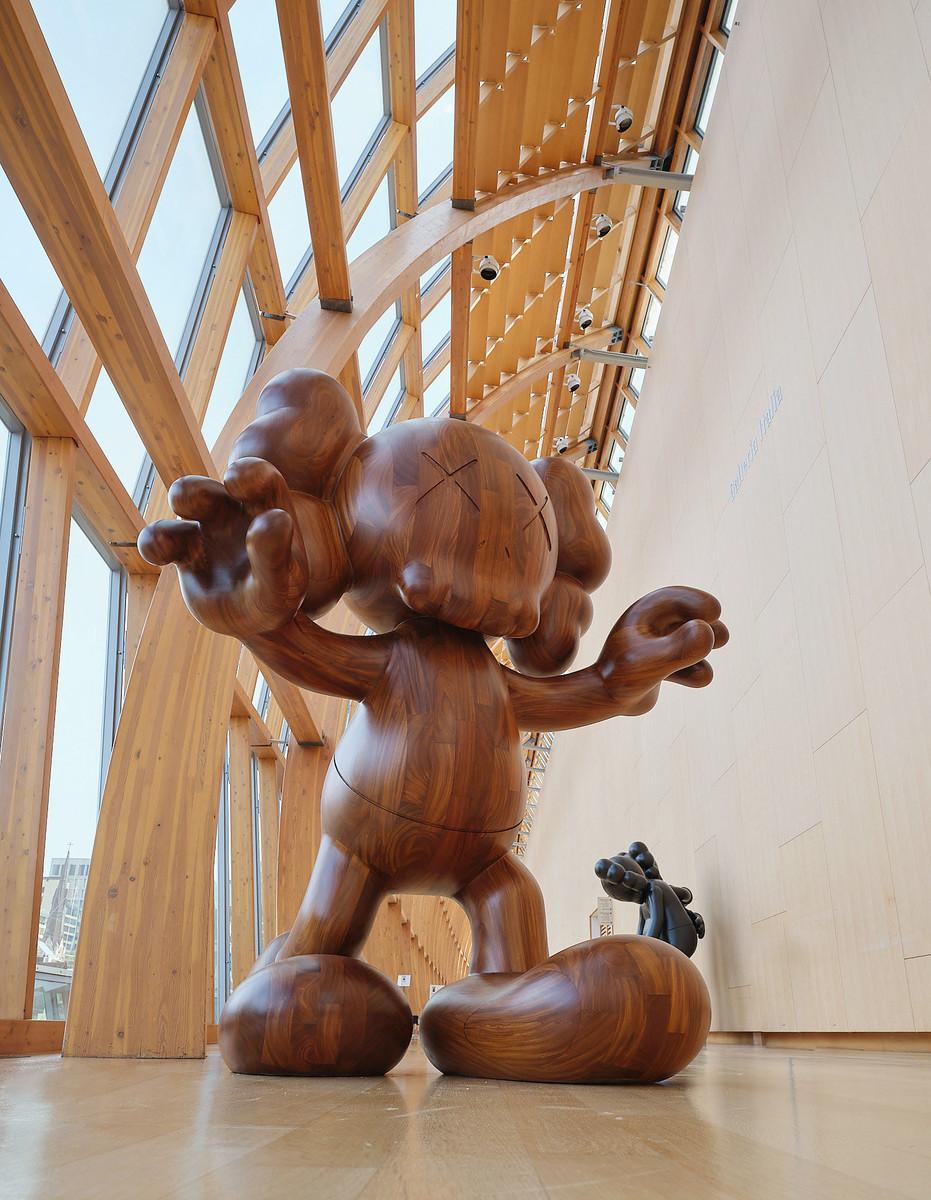
Installation view, KAWS: FAMILY, Art Gallery of Ontario. Work shown: FINAL DAYS, 2014. © KAWS. Photo AGO.
The COMPANION character has appeared so many places, and in so many forms – from the Macy's Day Parade to MTV Moon man, to Kid Cudi album art. Do you have any bucket list platforms or portrayals that you'd like to see for COMPANION in the future?
Not really. I never really have a plan, in anything. A lot of the situations I've been in have just happened organically. I like to stay in the present. I don't think too much about the future. I just sort of follow where the opportunities lead – I say this, but sometimes I do work three or four years ahead on certain projects. But I'm completely content. I feel like there's been more opportunities than I could have ever imagined.
I think when I start to bring things [references, ideas, concepts] into my practice, I never stop thinking about them. There’s always moments of development that I may or may not apply at that time. With sculpture, I'm very slow to introduce a new figure, because I feel like the ones that I have are – as the show says – already a family. Until I feel a need, or something new comes to me to introduce, I don’t.
A lot of times I just use them [my characters] to communicate. I use them to put my observations into the world.
Do any of the characters have a fictional origin story? If not, have you ever thought about putting one together for the fans at any point?
They don’t, and I haven’t. One of the things I like about [the characters] – that keeps the creative process interesting for me – is that there is no narrative. There's no storyline that I'm trying to bring forward, I just see them as select forms. I've been approached about animations, but I feel like that could potentially take away the qualities I like about them.
I look at the sculptures as an exploration of form and surface. BFF came to be because I was making all these bulbous sculptures with COMPANION and with CHUM, and I really wanted something that would play with light differently. I was trying to figure out what that could be, and then I thought sculpting fur could be good. That was really the artistic starting point for that character. Then of course I do a Sesame Street collab and everybody's like, “oh, yeah, that's like Elmo.” So people project their own ideas into everything.
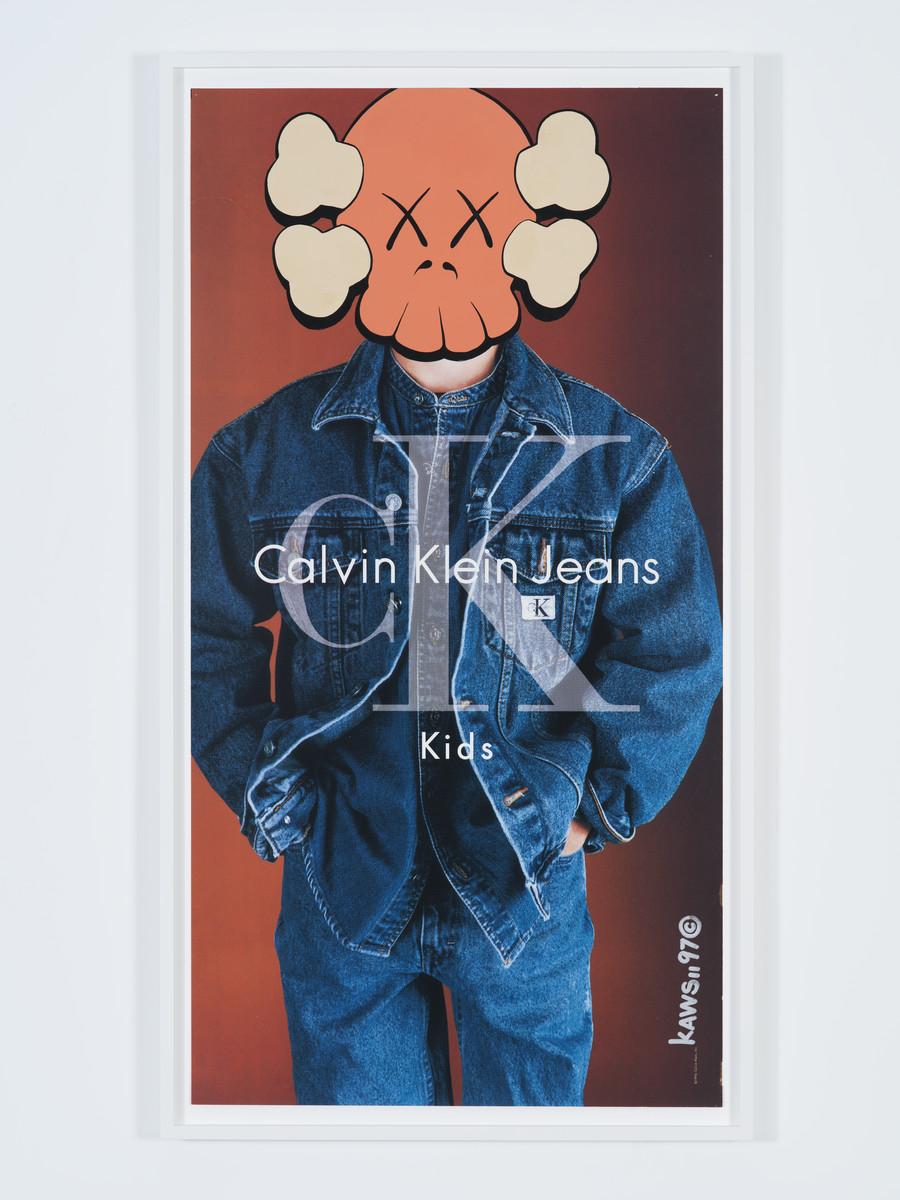
KAWS. UNTITLED (CALVIN KLEIN), 1997. Acrylic on existing advertising poster, 126.7 × 66 cm (49 7/8 × 26 in.) © KAWS. Photo: Farzad Owrang.
Considering your beginnings as a graffiti writer, and your early years doing more subversive and guerilla style work (painting over corporate billboards, and phone booths), to now becoming a globally iconic artist, collaborating with major brands, and being associated with a higher degree of celebrity, how do you reflect on that journey? Specifically, what are your thoughts about the contrast between where you started and where you’ve ended up?
Thankfully, I feel like I've been blissfully naive the whole way. When I was younger, the celebrities for me were other artists – graffiti artists – and they still are. FUTURA 2000 was here last night. To me, he’s still a legend and an inspiration. I take people as they come – whether it's a musician or an artist – I’m concerned with how their work has affected me. And beyond that, it's like, “what kind of person are you?” You find similar dynamics in all circles, and I don't really differentiate. I definitely don't feel like this [the work I make now] is a graduation from graffiti. I mean, no offense to the AGO at all – it's an amazing institution and I'm extremely thankful to be here – but I probably felt just as thankful to be painting walls with certain artists in the 90s. I remember the first painting with ZEPHYR and in my mind that guy was an icon. I think along the way there have been a lot of stepping opportunities for me, and I’m excited about it all.
The thing about graffiti I really love is that it’s just about looking at the art. I remember being given a pass to paint in Washington Heights in the Bronx because of my work. I’d be [painting] a wall with guys that – if it wasn't for the art – I really wouldn't be hanging out with. My first trip out of the country was Germany in ‘96. I roll in, never having left Jersey City before, and because of graffiti, there was a bunch of guys that took me painting and instantly embraced me.
I see a lot of similarities between doing public art and the type of work I started with. Except now, it's being commissioned, or sometimes collaborators in different countries are creating these projects with me. I love the idea of somebody not looking for art, then walking into it and seeing it. I think that's what excites me about sculpture and monumental scale works. Communication is communication. That's why I got into making art, and that's why I'm still here.
KAWS: FAMILY is on view until August 5, 2024 in Signy Eaton Gallery (244), Galeria Italia and Irina Moore Gallery (250) on Level 2 of the AGO.

